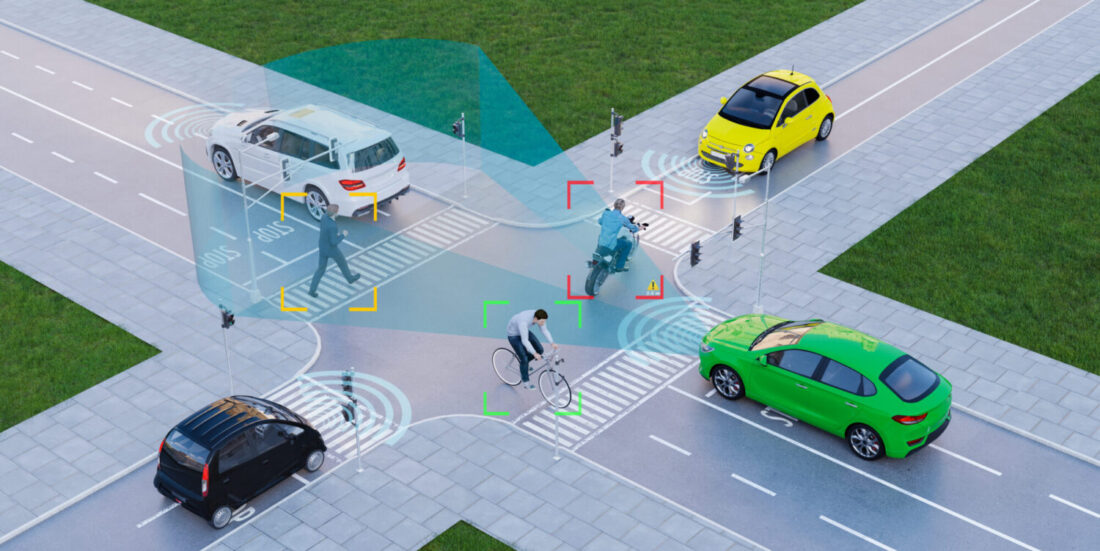Machines will be the drivers of tomorrow. But how will we get there?
The actions that vehicle drivers perform today will be handed over to machines – just as soon as the technology makes it possible and road users demand that such systems be put in place. This is no simple task, but Norway is far ahead of the curve.
Current developments mean that, among other things, machines will have to be familiar with road traffic regulations and be able to take the correct actions in all possible situations – in the same way as we do today. In order to make this a reality, machines must be equipped with effective sensors that can tell the computers incorporated in the vehicles everything that is happening around them, from traffic status to weather conditions.
The computers will then combine this information with programmed input about road traffic legislation and regulations. The provisions contained in these laws and regulations will thus have to be stored electronically in the computers so as to enable them to make the correct decisions in any potential situation. The machines will have to be familiar with statutory regulations governing such things as road signage, road markings, traffic signals and codes of practice.
- Take a look at what SINTEF is doing in the field of mobility (in Norwegian).
What happens if something goes wrong? And who is responsible in the event of an accident or if a vehicle drives off the road? Will it be the vehicle owner, the manufacturer, or perhaps the agency responsible for the road, which may have failed to carry out essential maintenance of the road markings on which the sensors in the vehicles depend in order for the machines to drive them safely? Clearly, there are gaps in our existing legislation that have to be closed.
The machines must also be able to record, interpret and act correctly in response to changes in normal traffic conditions, such as road closures or diversions due to accidents, short-term road works or maintenance. But how will the machines behave when the weather becomes so bad that they are unable to receive the information they need from the sensors?
In order for machines to possess the knowledge necessary to drive vehicles safely and efficiently in real time, they will require a digital infrastructure that can collect, store, secure and distribute all the data they need. We’re not talking here about a single device, but a complex ‘system of systems’ (an ‘intelligent transport system’) that can integrate the information contained in current legislation, statutory and other regulations, into a machine-readable format that on-board computers can ‘understand’.
Many actors will have a stake in the use and operation of such a system of systems, including the agencies that own and maintain the roads, vehicle manufacturers and a variety of construction companies.
The biggest challenge we will face when handing over the responsibility for driving to a machine, is most probably in identifying how the machine will succeed in dealing with various traffic situations in ways that are acceptable to most people, while at the same time meeting the requirements stipulated by the authorities. Another issue will be whether the data utilised by the machines are correct in real time. Such data will have to be reliably complete and accessible at all times when the machines are in operation.
The second main challenge concerns the standardisation of these intelligent transport systems (ITS). This standardisation process is currently ongoing. The process demands extensive international collaboration to look into the requirements that intelligent transport systems and the interfaces between the various subsystems require. The collective term for these standards is METR (Management of Electronic Traffic Regulations). Extensive work is also being carried out at European level to secure the data that will be utilised by intelligent transport systems, including those relevant to the autonomous driving of vehicles.
In Norway, the Public Roads Agency (Statens vegvesen) is currently participating in the development of the METR standards. In parallel with efforts to develop ISO standards, work is also in progress to create ‘system of system’ models that are adapted to Norwegian needs and stakeholder organisation. This work is at all times based on the more universal models that constitute the basis of the ISO standards. It is this work that SINTEF is involved in, together with our partners at Mobilits AS.
Our experience indicates that Norway is way ahead of the curve when it comes to the development of autonomous driving systems, both in terms of experimental work and testing, and in connection with efforts to establish international standardisation. This is no easy task, but our efforts are putting Norway in a good position on the global map when it comes to the development and use of intelligent transport systems. Our hope is that such systems will contribute to safer, more efficient, more eco-friendly and more accessible transport opportunities for all kinds of road users.
This article was first published in the newspaper Adresseavisen on 20 June 2023.


